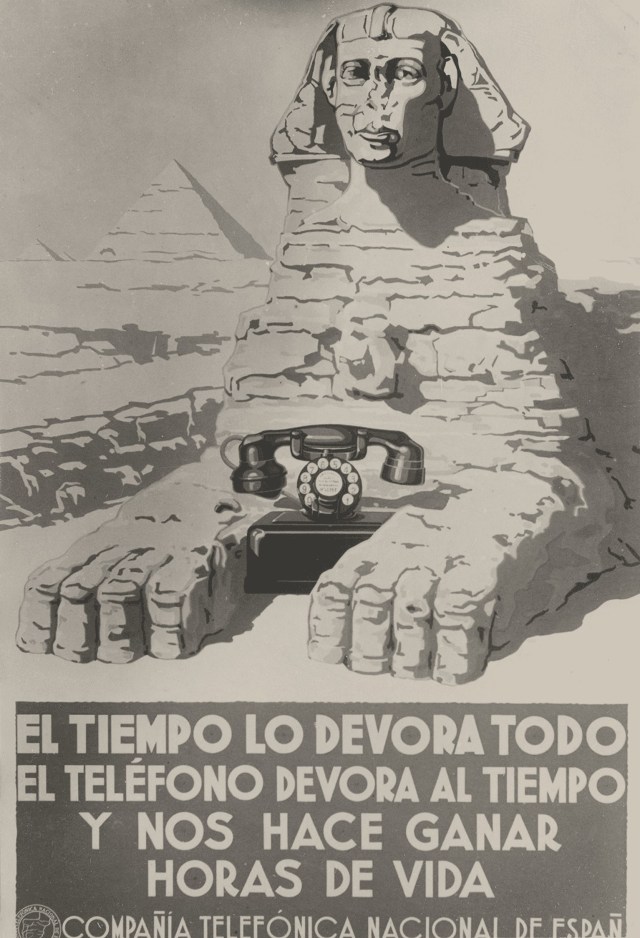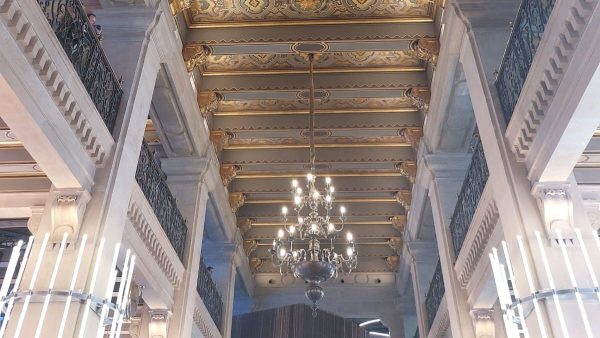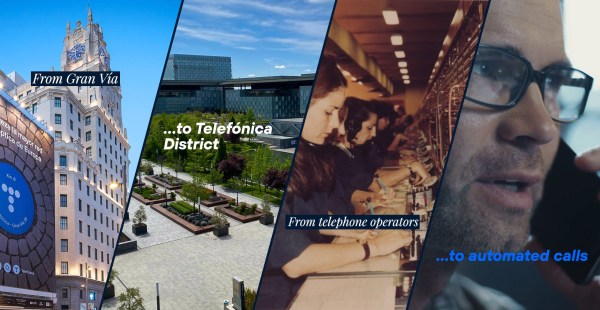The 1950s were marked by the acceleration of the decolonization process in Africa, the Middle East and Asia, while in the Old Continent the treaties that would later give rise to the European Union were being signed.
Consumerism advanced in the United States while the German and Japanese economies underwent a strong (and “miraculous”) recovery, in a context in which the space race became one of the main axes of the technological-cultural rivalry of the Cold War.
In 1957 the Soviet Sputnik 1 becomes the first artificial satellite in history and Sputnik 2 has an illustrious passenger, the dog Laika, the first animal to travel into space.
1950: teamwork, the maxim for telephone operators
The work of the telephone operators, popularly known as cable girls, was based on a very thorough training since they were in charge of the operation of long-distance and international calls and had to coordinate efficiently with other telephone operators.
In addition, they were in charge of customer contact and were therefore the image of the company in their daily dealings.
As we report in our centenary website, the 1950 telephone operator’s manual already indicated the importance of teamwork since “the execution of the service would be impossible if each operator, even with the best intentions, worked as he saw fit (…) teamwork is especially necessary in the task of setting up a conference, since the intercity operation will not be possible without a spirit of cooperation similar to that of a sports team”.
A spirit and pride of belonging that has been maintained over the years to the point that those of us who work at Telefónica refer to ourselves as ‘telephonists’.
1951: automation advances
The automatic system continues to advance and reaches two new provincial capitals (Lugo and Guadalajara) so that the systems are designed and installed with a view to the future, since each new automatic exchange is born ready so that, in the medium term, the subscribers themselves will be able to manage their calls between different locations.
In a year marked by technological advances such as coaxial cable or the multiple radio system, the waiting list continued to be a workhorse for Telefónica: 166,000 requests were still unattended.
This matter was of great concern to the company, to the point that the 1951 memo stated the following: “You can be sure that we will not fail to do anything that is feasible and that our ambition is to implement in Spain a telephone service as extensive, complete and perfect as the best in the world can be”.
1952: first experiences in mobile telephony from vehicles
Although it may seem incredible, as early as 1952 it was possible to talk from the telephone in the car: this year we announced that urban mobile radio equipment was being tested and would soon enter service in Madrid and Barcelona, a breakthrough that “will enable our subscribers to talk to cars on the move within the urban area of the city”.
1952 was also marked by a new milestone for the company: for the first time in history, more than 100,000 telephones were installed during the year.
1953: subscriber-to-subscriber calls
The year 1953 brought a qualitative leap in automation, with the installation in the provincial exchanges of equipment allowing direct subscriber-to-subscriber dialing without operator intervention.
That same year, the number of employees exceeded 17,000, making Telefónica the largest private employer in the country. At the same time, the social policy continued to expand, from a new health insurance scheme to the creation of holiday homes.
1954: the intercom becomes popular
The year of the company’s 30th anniversary closed with more than 980,000 lines.
The intercom also began to become popular, terminals installed in large areas such as factories, offices or hotels that communicate with each other without going outside. Very useful devices for communication between different rooms or rooms with a simple use and a simple and economical maintenance.
1955: A million telephones!
1955 was one of the company’s major milestones, when it reached one million telephones installed. Spain thus became the eleventh country in the world to reach this figure.
In addition, with the incorporation of Teruel, all the Spanish provincial capitals completed the map of provincial capitals with automatic exchanges. However, there were still more than three decades to go before the entire service could operate without the intervention of telephone operators.
1956: the arrival of domestic rotary phones
1956 was marked by two events of great importance in the domestic sphere. The first was the start of TVE broadcasts. As explained on the centenary website, “during the previous years, the necessary infrastructures of the basic network were implemented, and with the inauguration this year of the Madrid-Zaragoza-Barcelona coaxial cable, which would provide much easier and higher quality communications, the ideal scenario was established for the multiple connections that would allow television broadcasts”.
In the same year, Telefónica introduced the 5523-EZ model as the first disc telephone in Spain for domestic use. This was a nationally manufactured terminal made of black Bakelite in which the handset and the apparatus were connected by means of an extendable spiral cable with a marking disc in the centre. It is true that this device was still within the reach of very few households.
1957: ship calls were no longer science fiction
Although it may seem shocking now, in 1957 the “Measured Service” began to be used in Madrid and Barcelona, a new form of pricing popularised in other countries, whereby the cost of the call depended on how long it lasted. For decades, pricing was by “steps” and this was how calls were measured.
1957 ended with 175,000 new telephone lines, the highest annual record ever. A year that also included a novelty: the possibility of telephoning travellers on ships at sea with the same quality of service as if they were at home.
1958: record number of new towns with telephones for the first time
In this year, Telefónica achieved a new record: almost 600 towns were able to use the telephone for the first time.
In 1958, the welfare of the workforce continued to be a priority, with housing, commissaries, regular X-ray check-ups, children’s camps and holiday homes.
1959: increase in the quality of service
By the end of this year, the company can attest that 55% of calls are answered immediately and 80% are answered within the first half minute.
For these improvements in service, as well as with the aim of reducing waiting lists for people wanting to have a telephone line, the company needed investment and capital.
Capital increases were not the only formula, and the CTNE obtained government approval to apply certain service increases: depending on the type of call, surcharges of between 0.25 and 3 pesetas or a rise in the subscription fee of “30 pesetas for individuals and 45 pesetas for business people”.
1950s images






Telefónica Centenary
If you are interested in the history of our company, don’t miss the website https://www.telefonica100.com/ with year-by-year information on the highlights of our century of life.
You can also take a closer look decade by decade (the 1920s, 1930s and 1940s are now available) in the series we are publishing on our blog.









